(Updated Aug 1, 2020)
Trabzon in Turkey’s northeastern coast is well known for three things – Sumela Monastery, hamsi and tea.
While Trabzon is called the City of Sultans (it was the birthplace of the famous Ottoman sultan, Suleiman the Magnificent after all), but it the Sumela Monastery that entices travelers into making long trip.
Enter – me.
Sumela Monastery was my only reason to being on this side of Black Sea. I had seen pictures of this 2000 years old monastery peering out of a sheer rock face set inside a dense forest and surrounded by snow capped mountains and had vowed to visit it one day.
About Sumela Monastery
A Greek Orthodox monastery, Sumela Monastery is dedicated to the Virgin Mary and located in the Black Mountains in the Macka district of Trabzon Province.
The monastery has a very tumultuous (if not downright interesting) past. In 1923 it was abandoned when the Greek population was forced out of the region. When the forced exodus was taking place, the monks, unable to take away any property with them, buried the famous icon under the floor of the monastery. Three years later a monk returned secretly and carted away the icon and later installed it at the new Panagia Soumela Monastery, on the slopes of Mount Vermion in Greece.
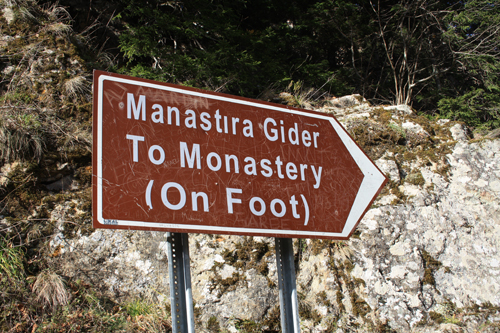
The same year, a fire gutted many of the wooden parts of the monastery and later by vandals and looters, until many decades later the Turkish government took up the restoration work on the monastery, converting it into a major tourist attraction popular for its cultural and religious significance.
Arriving at Sumela Monastery
I had come on a bus from Trabzon and this bus dropped me and the rest of the other passengers, nearly all tourists, some distance from away from the actual site itself. The rest of the journey was undertaken on foot and each time I paused for breath (and photograph), I wondered just how (and why) monks 2000 years ago found this place to build the site and covered the interiors with frescoes and carvings (this i knew from the brochure) so far away from the public eye.
As I stood looking up at that particular piece of marvel in the mountains, I saluted man’s determination to create a something that would last forever. Sumela Monastery defies imagination. With every step I took towards it, I felt as though I walking back in time.
I was glad for one thing though – for the shoes that I as wearing and the water I had in my backpack. Another tourist, had thoughtlessly worn heels and before we took fifty steps, her heel had come off and she continued the rest of the journey of foot, her damaged heels dangling in her hands).
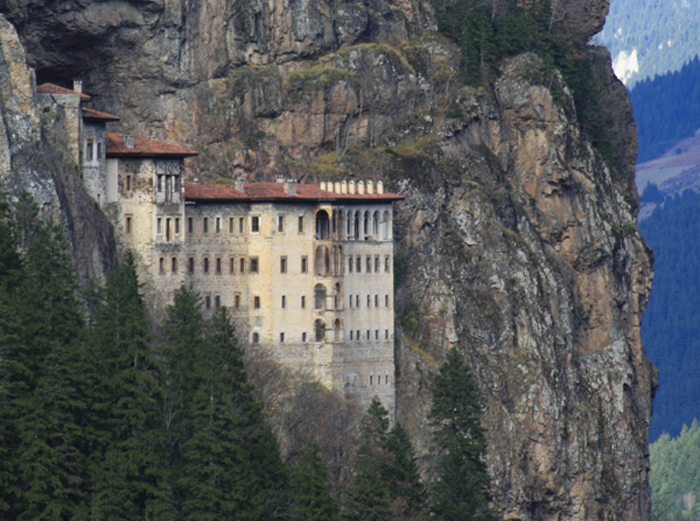
Standing there facing the long heavenward flight of stairs does something to you. It did to me for sure. I couldn’t get enough of the fascinating landscape around me and the views from the monastery were simply brilliant. A wee bit of disappointment was in store though. Much of the site was closed to visitors – and I did wonder if I had spent so much time and money to look down at the valleys below?
Everything here was made of stone or carved out of one. This site is very well maintained and security cameras ensure that graffiti doesn’t make an appearance.
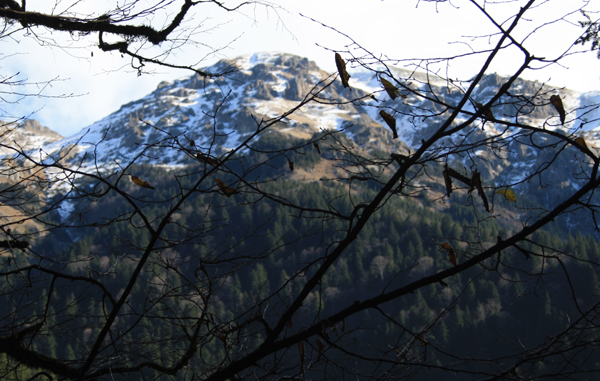
A sight as pretty as that makes it worth the effort
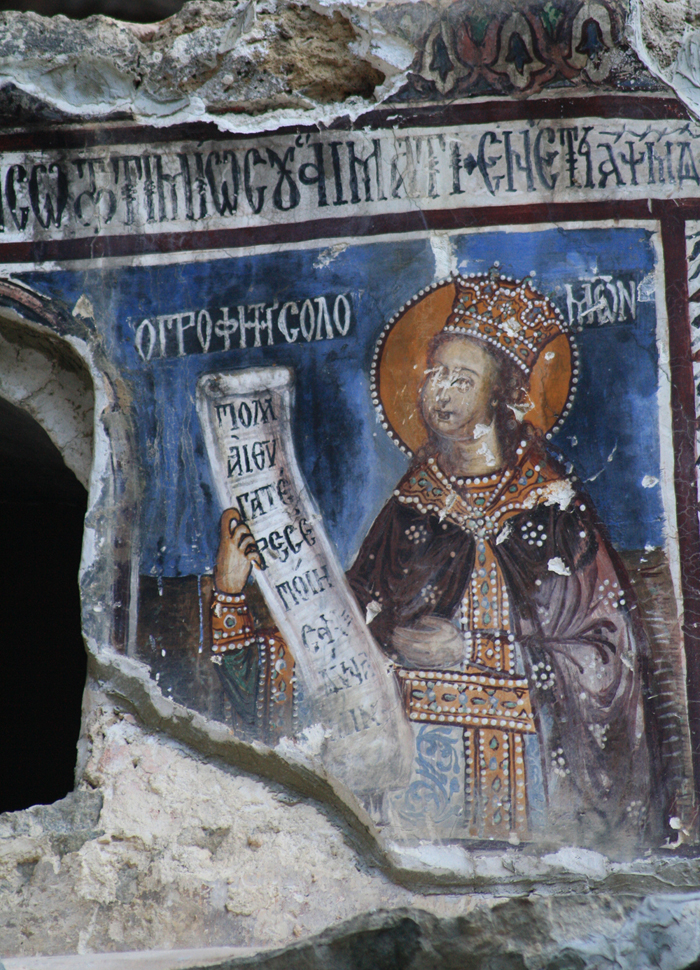
Once inside the monastery the excitement returned. Everything I touched was ancient – thousands of years old and that was exciting in itself and enough to overcame any disappointment.
Beautiful frescoes adorned the walls, lasting centuries of snow, wind, rain and pillaging rulers.
Please remember that you are NOT allowed to use flash inside the church – if you do, you put yourself and the camera at the mercy of the armed guard!
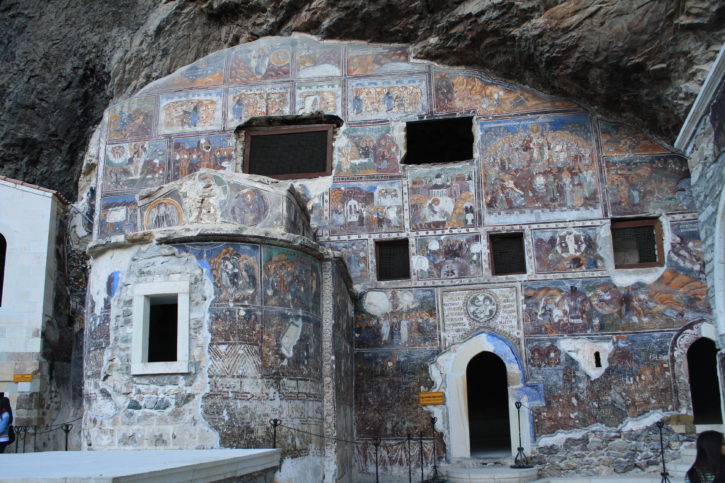
When I visited, only some areas were open to the public. The tour of the monastery can be undertaken in under half hour, if you don’t stand around too long to photograph every minuscule room, such as the library or the priest room. Many of the rooms are reinforced lately – and all of the rooms are stripped bare of every article of importance – so really all you get to see are the paintings.
The one interesting sight is the Sacred Well – if you reached out towards the well, you could be lucky enough to collect the sacred water that trickles down the mountains – or you could simply toss a few liras into the well and make a wish. I am yet to figure out if my wish has come true or not.
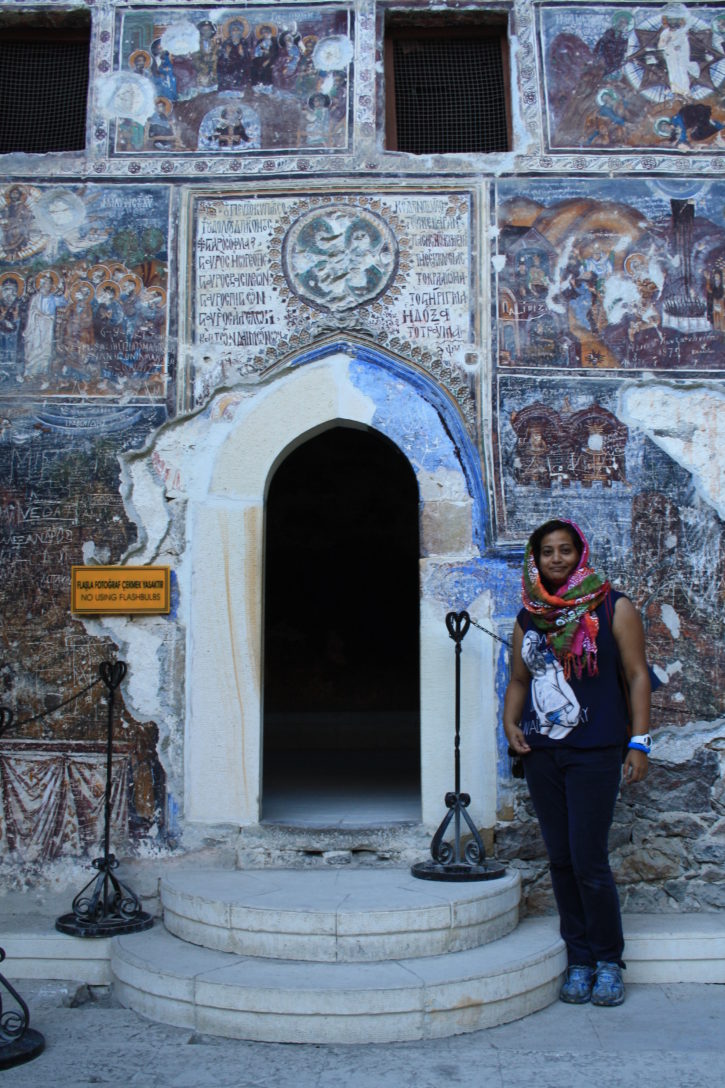
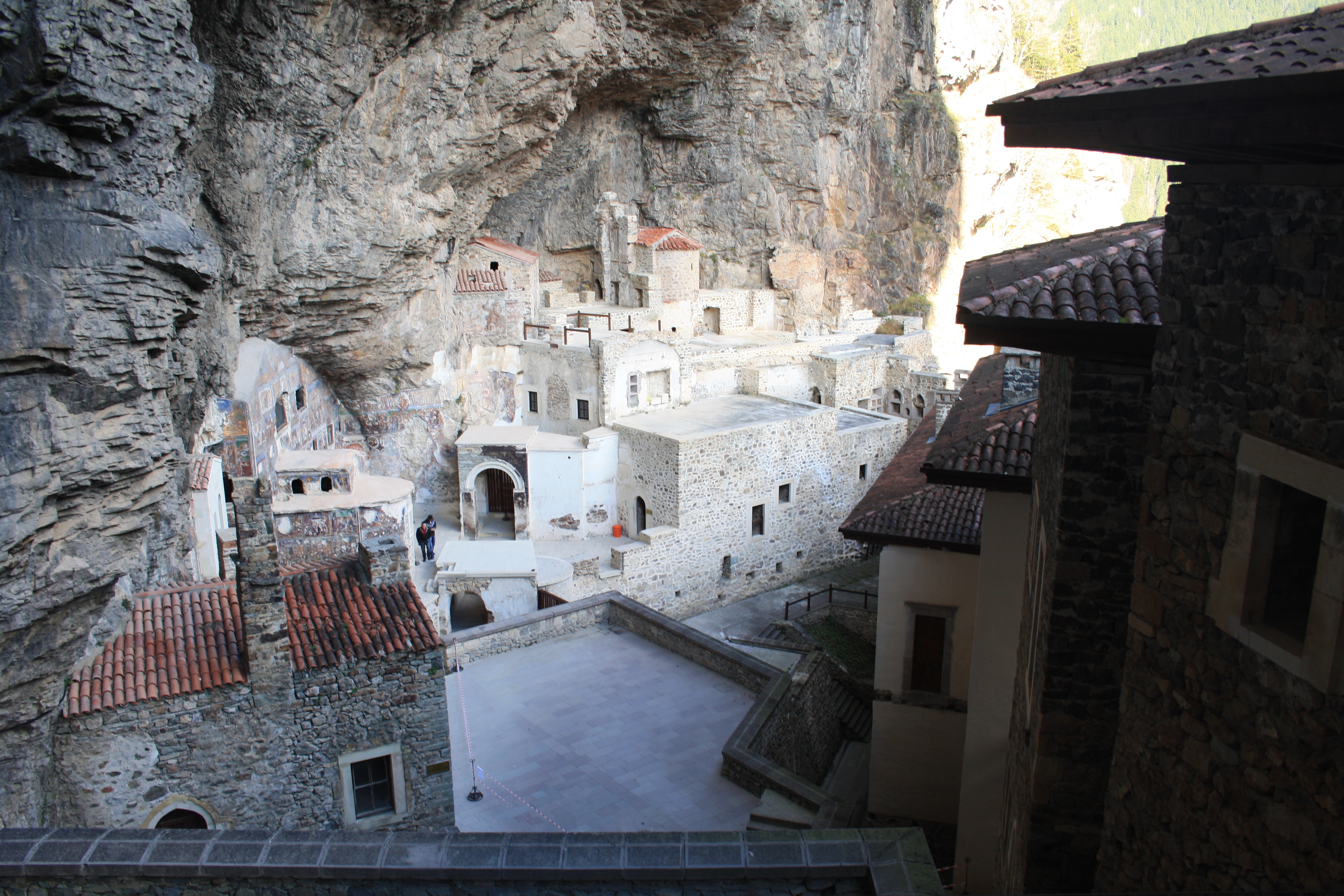

Please Note: While you can visit this place on your own – if you are pressed for time it is a good idea to book a day tour. The tours include pick up and drop, lunch and entrance fee. Please remember that you will have to pay 8L which is not included in the tour price to actually enter the site.
People with time and an inclination to undertake steep climbs can easily undertake this monastery trek. It is definitely one of the best walks around these parts.
Useful Information
- Two Greek priests, Barnabas and Sophronios, founded the monastery in 386AD during the Roman times.
- It was built on the steep cliff in the Macka region of Trabzon, in the Black Sea region.
- In the 13th century, Trabzon became the capital of the Komnenos Dynasty, which became a separate state to the Byzantium Empire.
- In the second half of the century, the monastery took its current form.
- When Ottoman Sultan Mehmed II conquered Trabzon in 1461, he ordered the protection of the monastic complex and gave some privileges and special rights to it.
Travel Information
The simplest way to get to the monastery (30km from Trabzon) is by tour – these are easily available in town.
If you intend to go on your own, can get to Maçka on a minibuses heading for Gümüşhane, Erzurum or other destinations south from Trabzon. The rest of the way (approximately 17 km to the actual site) can be done by dolmuşes from downtown Maçka, which will take you to the entrance of Altındere National Park (Milli Park).
From the entrance of the park, it takes about thirty minutes (more or less depending on your speed and fitness level) through a forest trail, or along the tarmac road leading to the monastery. Those approaching with their own vehicles can get as near as 300 meters to Sümela itself, where there is a car-park in front of Hagia Barbara Chapel.
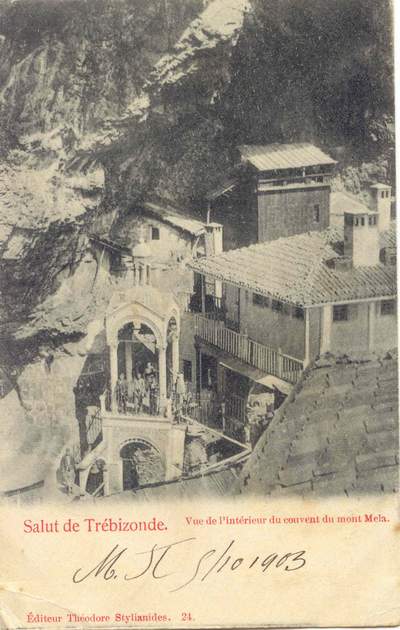


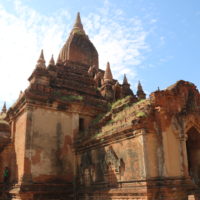

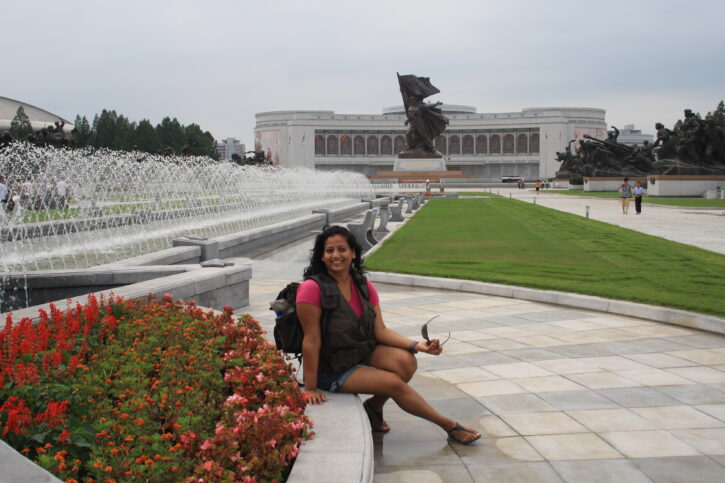
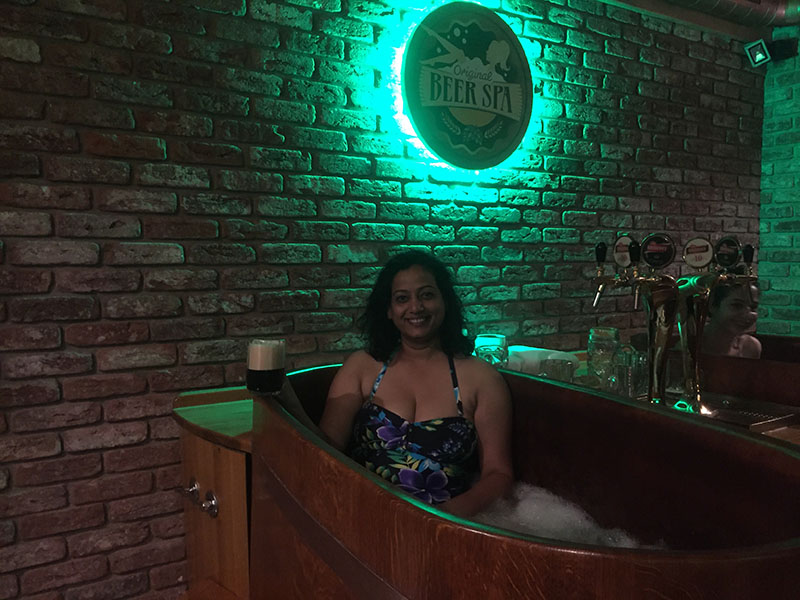
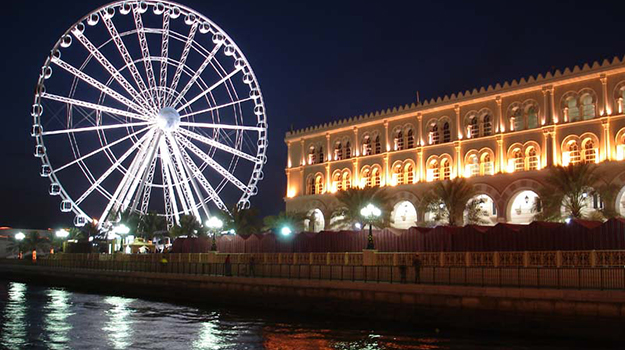
Thanks for the info on how to go about the tour – although I had read about the monastery earlier details on how to go about it was missing.
Always fancied Turkey! Your article is motivating me all the more to visit the place including the monastery very SOON!
very beautiful pictures and great adventure experience.
thanks for sharing this =)
Had never known such a treasure existed. Thanks for introducing this Monastery to us Anjaly. Has it been completely abandoned by the Monks? What was the reason behind it?